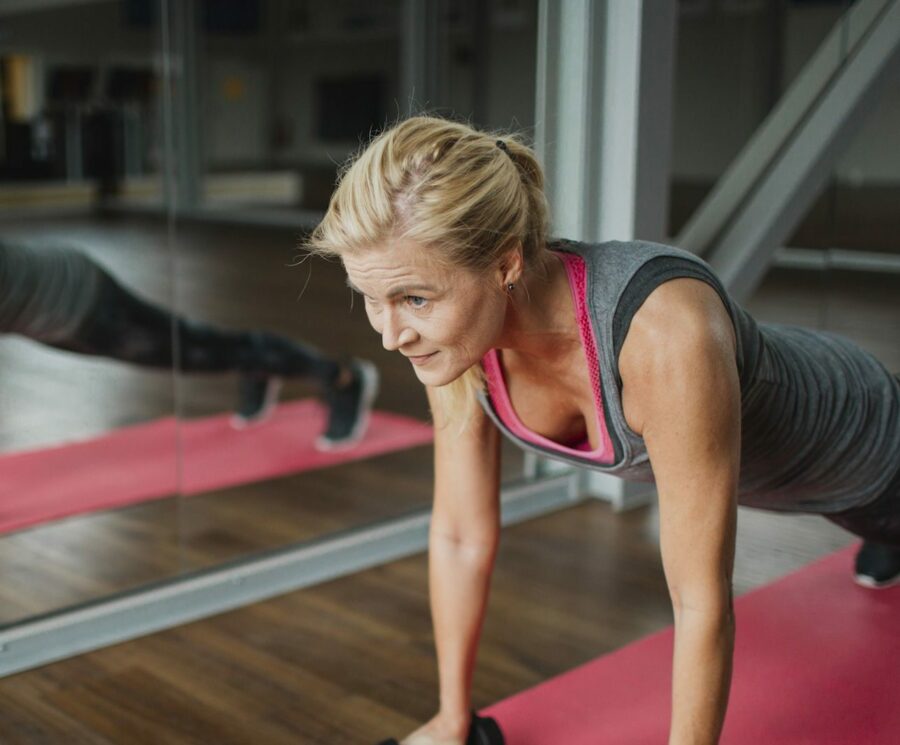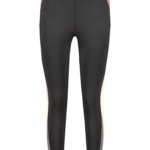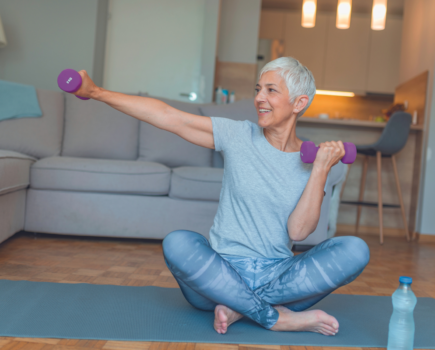Hailed as one of the most effective ways to tone muscles all over your body, TRX has quickly become a popular alternative to lifting weights and circuit training.
TRX, or Total Body Resistance Exercise, is a suspension-based workout that relies on balance and coordination to build lean muscle, tone the body and help loosen up joints.
Created by former US Navy SEAL, Randy Hetrick, the training challenges your entire body and in all planes of motion, meaning you have to engage multiple muscle groups in order to work one targeted area.
There’s no point sugar-coating it; TRX is hard — very much a “feel the burn” workout. But commit to the process and an hour-long session could burn up to 520 calories, with reports saying that people tend to notice a more toned physique after just four weeks.
https://www.instagram.com/p/CKQpUPxH6cj/
To paint a picture, the workout centres around two sturdy adjustable straps suspended from the roof or anchored around a large pole. You hold on to the ends of these straps, using your centre of gravity to increase the difficulty of generic exercises.
Mandy Platt, a mind and body coach and personal trainer, trains women to become more body confident, and helps rehabilitate clients after illness or injury. “Fitness is not just about the workout, it’s about emotions, thoughts, spirit and zest for life,” she says.
As a 54-year-old woman herself, she explains the benefits of TRX workouts and how they can make you feel and look good.
Your TRX lowdown
https://www.instagram.com/p/CM0DGEXDCkl/
“TRX is a form of suspension training that uses body weight to develop strength, balance, flexibility and core stability simultaneously. The straps are simple pieces of equipment, very easy to use, and you don’t need anything else but your weight to work your whole body,” Mandy explains.
For example, where normally a press-up exercises arms and shoulders, with TRX straps it targets your torso, too.
“This is because your feet will be fed through the handles and lifted in the air behind you,” Mandy says. “Your hands are placed on the ground in the usual press-up position, but it is only by engaging your stomach muscles that you can stop your legs from flailing around behind you.”
It all sounds quite complicated, but learning how to stay balanced in the straps is the biggest hurdle. Once you know where to put your arms and legs for stability, you can focus on working the areas that matter.
What are the benefits of TRX?
https://www.instagram.com/p/CNLAqTLIH_l/
“I personally love the TRX straps and as a woman in my 50s, I incorporate it into my workouts regularly,” Mandy shares. “You can use it at whatever level is comfortable for you.”
The Council on Exercise in America commissioned a study of the benefits of suspension training in 16 women between the ages of 20 and 71.
Participants did a 60-minute TRX class three times per week for eight weeks, with various physical fitness and health markers measured before and after the program. Results showed significant decreases in waist circumference, body fat percentage, resting blood pressure and heightened endurance levels.
“TRX is very functional and prepares the body to move skilfully in ways it will have to in real life using agility, mobility and balance,” says Mandy.
Earlier this year, a study carried out by the University of Oxford also said that, “there are no limits to the benefits of exercise in reducing cardiovascular disease”, citing weight-bearing and balance-based workouts as particularly beneficial for those with less fitness experience.
According to Mandy, “It’s true that TRX is a great alternative to lifting weights adding variety and pushing your body’s respiratory system in a whole new way.”
Can I do TRX with long-term aches and pains?
https://www.instagram.com/p/CNNo6GDIM-Z/
“It goes without saying that if you have injuries, you should consult a doctor,” Mandy advises. “When given the go ahead, make sure you research how TRX works before picking up your straps. And if possible, get some advice from a qualified professional either online or in person.”
According to Mandy, TRX can be adapted to all abilities simply by using different angles of the body and different strap lengths — it’s all about exploring what works best for you.
“Every muscle can be engaged in a pull or push motion. You can change speeds and perform a variety of different exercises to choose exactly how you work out,” she says.
How regularly should I do TRX?
https://www.instagram.com/p/CLvnHdcnbsK/
TRX Head of Human Performance, Chris Frankel, says, “The most basic or sophisticated programs all start with foundational principles described by the F.I.T.T acronym — frequency, intensity, time and type.”
The UK Chief Medical Officers’ Guidelines recommend that adults do at least 150 minutes moderate intensity activity per week, ensuring strengthening activities on two days.
“Some of your workouts each week should be heavily strength-based,” Chris agrees. “If you are new to TRX, start out training three days a week for 40 minutes each session with at least one day of recovery in between.”
You can blend power and endurance by alternating a slow strength exercise is with faster ones. Chris advises, “As your fitness improves, very slowly increase the intensity of your exercise sessions by working at a steeper body angle, with less stability or a combination of the two.”
What you need…
- Exercise mat, £10.99, TK Maxx
- Water bottle, £19.95, Kempii
- Trainers, £49.99, Asics
- Leggings, £16, F&F
Subscribe to Platinum today and get every issue delivered to your door. Or find your local stockist, here. Head to our health archive for more advice on wellbeing issues that matter to you.













